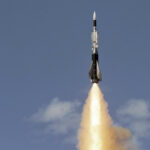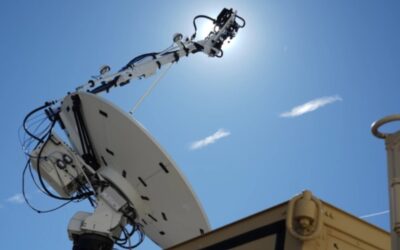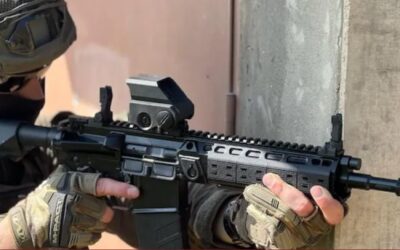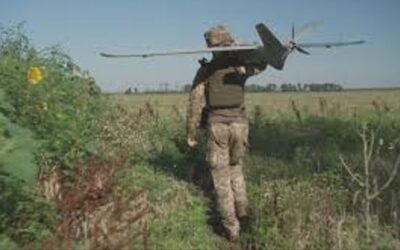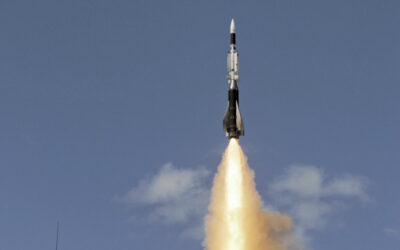The US Space Force has unveiled its new Remote Modular Terminal (RMT) weapon system. The system has completed its…
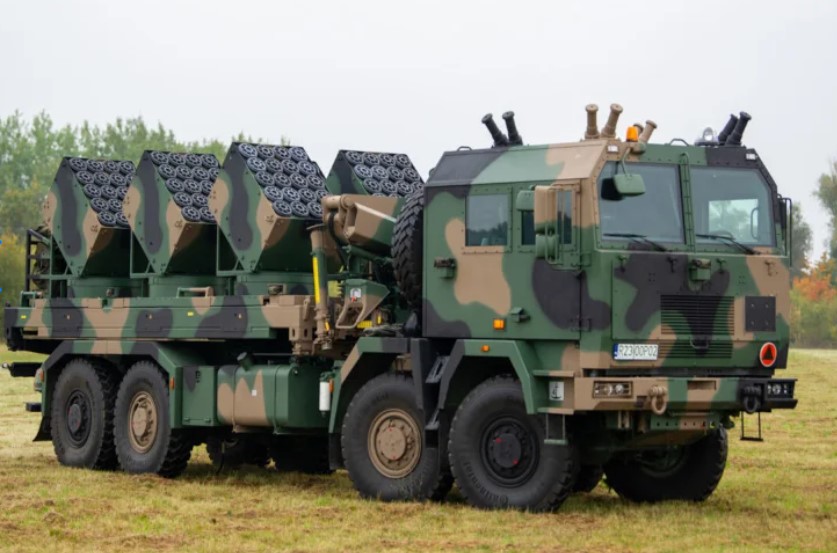
The contract, signed by Deputy Prime Minister Mariusz Błaszczak on June 14, 2023, represents a significant step in enhancing the engineering support capabilities of the Polish Armed Forces, reflecting Poland’s dedication to enhancing national security and supporting the growth of the domestic defence industry.
The BAOBAB-K is an 8×8 truck-mounted scatterable mine-laying system developed by Huta Stalowa Wola (HSW) S.A., in collaboration with Jelcz, Belma, WB Group, and the Military Institute of Engineering Technology.
These Polish companies have come together to create a prototype that offers capabilities for the automatic deployment of barrier minefields with varying sizes, densities, and self-destruction times. Specifically, the Baobab-K system is built on the Jelcz P662D.43 truck chassis, which also accommodates rocket launcher systems such as the US HIMARS and the South Korean Chunmoo K239.

Baobab-K system’s technical characteristics:
- Length: 11 m
- Width: 2.6 m
- Height: 3.4 m (launcher units included)
- Weight: 31,700 kg
- Maximum speed: 85 km/h
- Operational range off-road / on-road: 580 km / 1,650 km
- Crew: 2
- Laying Speed: 5 km/h to 25 km/h
- Laying Range: 30 m to 90 m
- Protection: STANAG 4569 ballistic protection up to level 1
- Depth crossing capability: up to 1.2 m
- Vertical obstacle crossing capability: 0.3 m
- Trench crossing capability: 0.6 m
Also read: Ukraine | Mine and explosive detection and defusing equipment from Britain
Regarding its configuration, the said system incorporates six mine launchers mounted on turntables at the rear of the truck chassis. Each launcher unit, developed by Belma, has the capacity to carry up to twenty preloaded magazines manufactured by WB Group. These magazines can hold five anti-tank mines each, providing a total capacity of 100 mines per launcher.
Particularly, the Baobab-K system supports two types of anti-tank mines: the MN123.1 with immediate action and the MN123.2 with delayed action, allowing various degrees of adaptability to different operational requirements. In addition to these, the system can be equipped with eight 81 mm smoke grenade launchers.
According to the manufacturers, the MN-123 mines are designed for effective penetration of armored vehicles. They are equipped with Misznay-Schardin shaped charges on both sides and they have a reported penetration capability of up to 60 mm of armored protection at an offset of 0.3 meters, too. The mines are triggered by the passage of vehicles, ensuring reliable and targeted deployment in the designated area.
Also read: Ukraine | Creates 30 minefields on border with Belarus
The automated mine-laying processes are controlled through a ground control station developed by the Military Institute of Engineering Technology. Operators can program the control unit in automatic or manual mode to customize minefield parameters.
In automatic mode, the onboard computer calculates the vehicle’s speed, launcher settings, and mine launch frequency while in motion. These parameters can be recorded, visualized on digital maps, and shared through advanced communication systems, facilitating coordination with higher command units.
Along with these, the subsystems include a tester for mine cassettes, a global positioning system (GPS) and an odometer, a FONET intercom system for digital communication, and an RRC 9311AP very high frequency (VHF) transceiver, while the vehicle is equipped with a central tire inflation system (CTIS) allowing it to operate in run-flat mode.
Also read: Iranian cargo ship Saviz attacked by Israel with the use of limpet mines – VIDEO
Overall, the Baobab-K system’s deployment capabilities allow for the precise and efficient creation of minefields, as it enables mines to be launched from the center line, sides, and rear of the vehicle, providing tactical flexibility.
The system’s launch parameters enable the creation of minefields up to 1,800 meters in length, all within a rapid laying time of less than 22 minutes. The reloading process can be completed in less than 30 minutes, ensuring quick reengagement, if required.
The 20-foot container frame of the truck allows it to be used as a transport vehicle after dismounting the mine-laying platform.
READ MORE
ASCANIO | Made-in-Cyprus Mixed Reality training
https://defenceredefined.com.cy/ascanio-made-in-cyprus-mixed-reality-training/Technology is advancing at an accelerated pace and so do the training requirements of those holding high-risk positions.
IWI | Introduces Micro Folding Battle Sights to enhance Co-Witness capabilities
IWI (Israel Weapon Industries), a member of the SK Group, has unveiled its new Micro Folding Battle Sights (MFBS).
Hellenic Entrepreneurs Association | Ideas & Positions for the Promotion of Greek Entrepreneurship
The members of the Hellenic Entrepreneurs Association (E.E.N.E.) participated in a roundtable discussion entitled “Ideas, Positions…
Ukraine | Increase in defence spending by 367 million euros for the acquisition of drones
Kiev is increasing spending by 15.5 billion hryvnias (367 million euros) to bolster Ukraine’s armed forces with drones, according to…
HMoND | The legislative initiative for HCDI is under consultation
The legislative initiative of the Ministry of National Defence, under the title: “Establishment of the Hellenic Center for Defence…
Russia | Cluster bombs hit residential area in Odessa
Images from Russia’s strike in the heart of Odessa, which hit the so-called “Harry Potter Castle”, a former politician’s mansion now…
France | Industries prioritize orders of anti-aircraft missiles
The Armed Forces Ministry of France has instructed industries involved in the production of Aster anti-aircraft and anti-ballistic…
Ecuador | Appeals to International Court of Justice denouncing Mexico
Ecuadorian police stormed the Mexican embassy hours after the Mexican government granted former Vice President…












